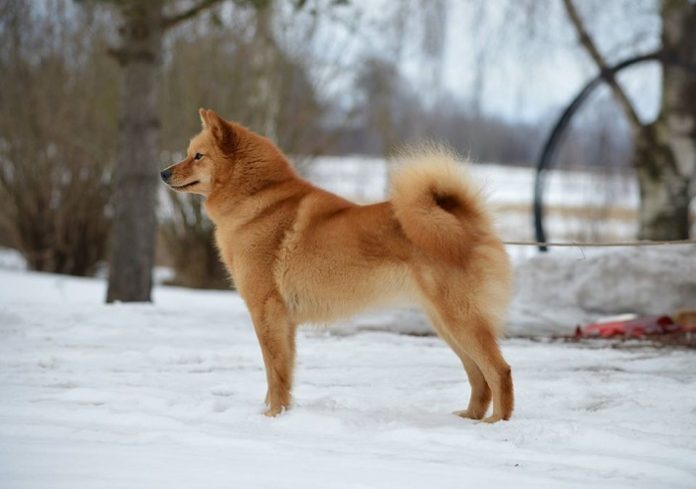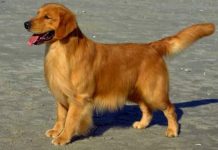The origin of the Finnish Spitz is unknown. However, it is known that hundreds of years ago, dogs similar to this breed were used to hunt all kinds of game hundreds of years ago.
The purpose was to create a dog that can bark to point to the game on the tree, which is also beautiful. These dogs have been on the verge of extinction since the technological advancement of new modes of transport.
Description
-Male dogs of this breed can reach a height of 44 to 50 centimeters.
-Female dogs of this breed can reach a height of 39 to 40 centimeters.
-Male dogs of this breed can reach a weight of 11 to 14 kilograms.
-Female dogs of this breed can weigh 9 to 12 kilograms.
-The lifespan of these dogs can be from 13 to 15 years.
Their backs are straight and strong, and their chests are deep, which adds to the rectangular appearance of the body. The ears are straight, spiky, and small and the tail is highly set, shaggy, and folded on the back with the top lying next to the hip.
Finnish spike fur is not difficult to maintain and requires only basic care. Fur should not be cut. It is needed only regularly at least twice a week. Brushing should be frequent in spring and autumn when these dogs are bathed.
Temperament
Finnish spitz is dogs that have a lot of energy and are happiest when they are part of an active family that will meet their needs for regular daily activities. Finnish spitz is playful, cheerful, active who prefers cold climates.
The Finnish Spitz does well with other pets, including cats. Sometimes Finnish spitz can be aggressive towards other dogs that are not familiar to them. The Finnish Spitz is also suspicious of foreigners and keeps its distance.
The Finnish Spitz is a great guard dog and will wake up the whole family if you see someone approaching or something unusual happening on its territory. In such situations, the Finnish Spitz will start barking. Finnish Spitz bark a lot.
Health
Finnish Spitz lives a healthy and long life. This breed of dog has no health problems. In general, there may be a problem: hip dysplasia, patellar lupus, and epilepsy.
Care
The Finnish Spitz needs a lot of movement. This dog is adapted to village life. They will not want to live in a cottage unless they live alone, that is if there is another dog that will have a good company. The dressing can be harder. The coach needs to be patient and consistent.
Feeding
Future owners of breed puppies Finnish Spitz need to take care in advance to find out what to feed their pets. Puppy’s diet should not contain pork and chicken. It is believed that this meat fat, and therefore should not be used in the diet. A pet can be given raw meat. What to feed, you can ask the breeder during the purchase of a puppy. But in any bone selected diet should be given with great caution, as some of them only a dog can not chew. In general, all, in turn, it is not recommended to feed the animals, so the stomach of this breed is quite weak.
Puppies
Newborn dogs look like little foxes. You are dark gray, black, and brown. Puppies should be fed special dog food while they are young until they become immune.
History
The Finnish Spitz as a dog breed comes from a family of artichoke spitz. When the Finns lived in tribes and clans, these dogs were used to hunt birds and squirrels. This dog is a national breed of dog in Finland. In the nineties of the nineteenth century began the introduction of races in the registry. The first standard was established in 1892. Today this breed is very common in Finland and Sweden. It is obtained naturally.





